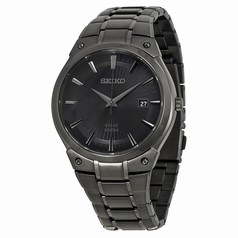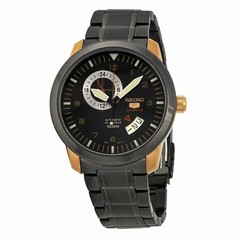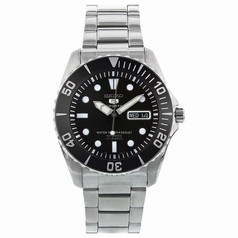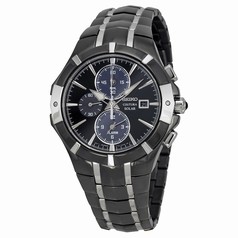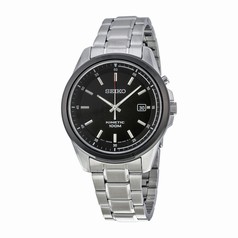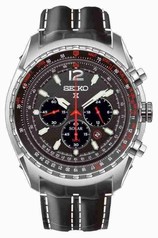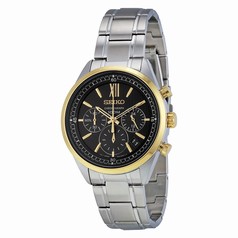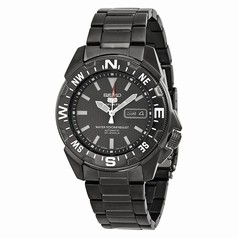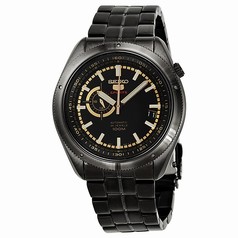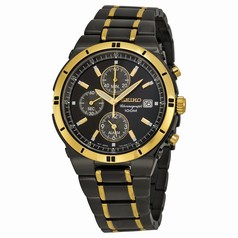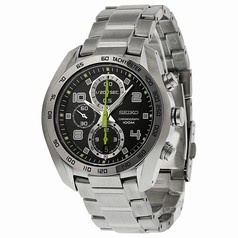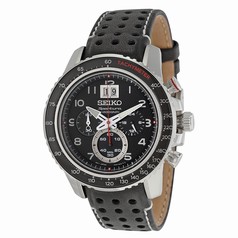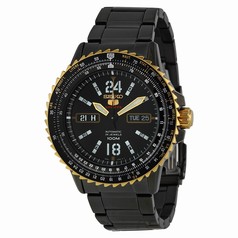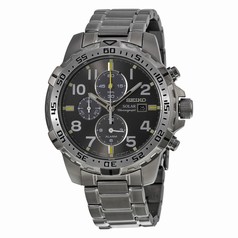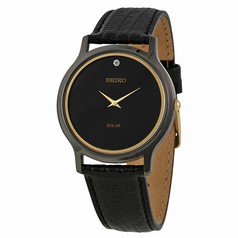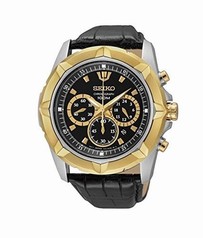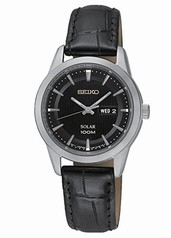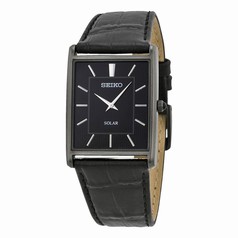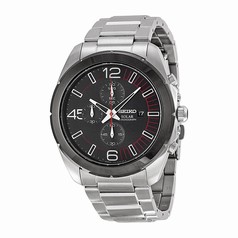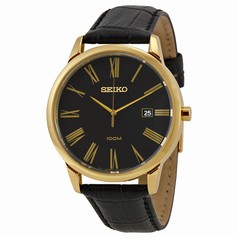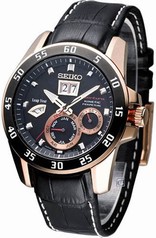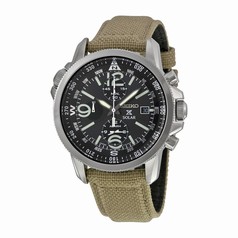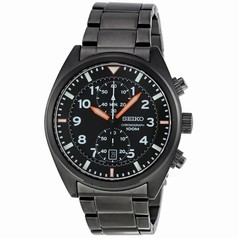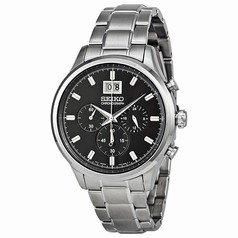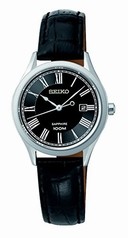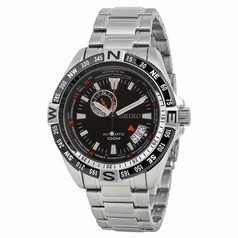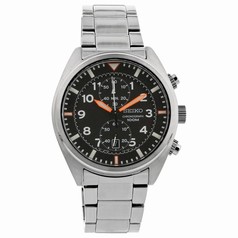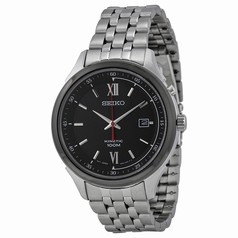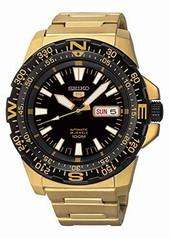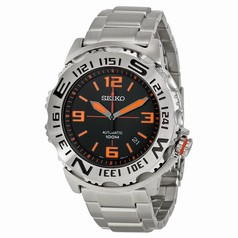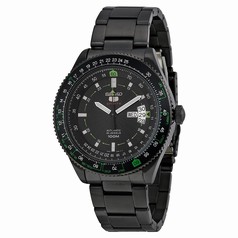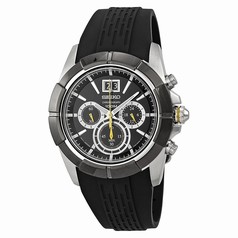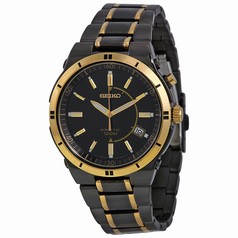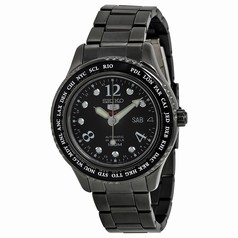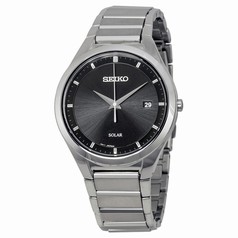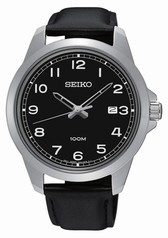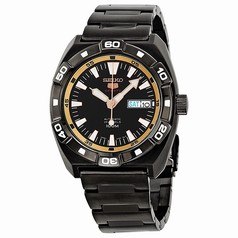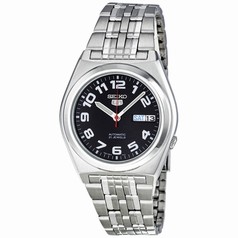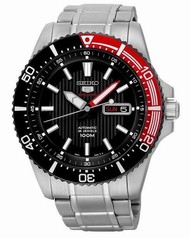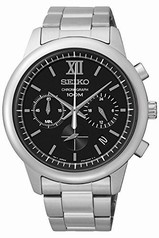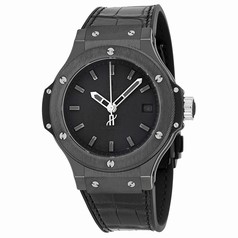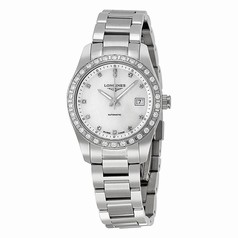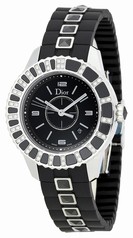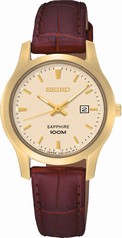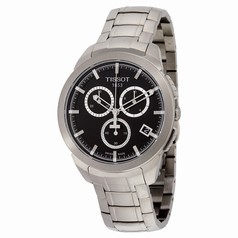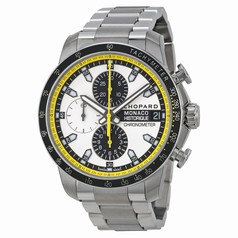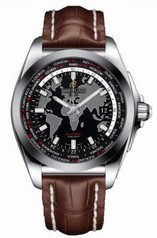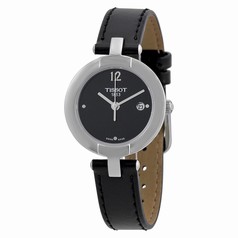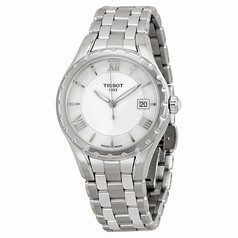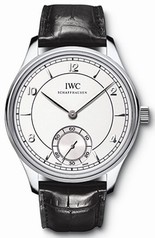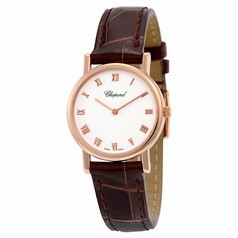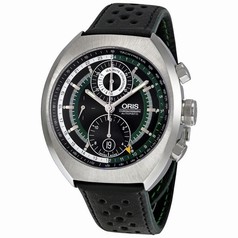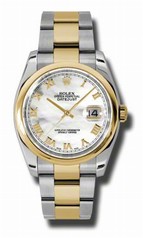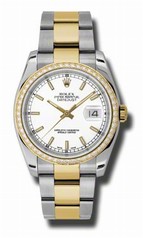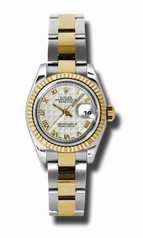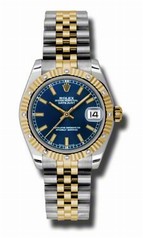-
Seiko - The Grand Seiko Hi-Beat honored at the GPHG
In an industry where many watches are feted with many prizes in many countries each year, one award stands far above all the others. It is the Grand Prix d'Horlogerie de Geneve. Founded in 2001, it immediately became the watch industry's "Oscars" and its award ceremony is now firmly established, alongside the Baselworld Fair, as one of the key dates in the watchmaking calendar.
On October 31, the 2014 Grand Prix d'Horlogerie de Geneve award ceremony took place at the Grand Theatre de Geneve. The "Petite Aiguille" category was open to any watch of any type under Sfr 8,000 in price and attracted a large entry. From the short list of six, the jury of 25 watch and luxury experts selected the Grand Seiko Hi-Beat 36000 GMT Limited Edition as the winner.
For over half a century, Grand Seiko has been the very best of Seiko, and to see its beauty, durability, legibility and watchmaking excellence recognised by the most prestigious award in the industry is the greatest possible tribute to the Grand Seiko watchmakers and designers, past and present, who have dedicated their skill and talent to the creation of this remarkable collection.
The watch that won the "Petite Aiguille" award was first revealed at Baselworld 2014. It is the Hi-beat 36000 GMT Limited Edition (SBGJ005). The caliber has a high accuracy of +5 to -3 seconds a day and a power reserve of 55 hours. The GMT hand can be used as a dual time indicator with the hour hand being adjustable independently as the time of day hands continue to mark time.
Commenting on the award, the President of Seiko Watch Corporation, Shinji Hattori said, " I am very grateful to the GPHG and its jury for their decision to award to Grand Seiko this most prestigious accolade. For 50 years, our Grand Seiko team has worked tirelessly to create the best possible functional watch in the world. The Hi-beat 36000 caliber is our proudest achievement so far and this award will spur us on to new achievements in the future."
-
In case you have missed it... - Last month's watches
Armin Strom - Gravity Air
The Gravity Air watch, part of the Gravity collection, features a titanium case and a white dial. It is fitted with the new AMR13 calibre.
Audemars Piguet - Royal Oak Concept GMT Tourbillon
The Royal Oak Concept GMT Tourbillon will be presented for the first time at the Salon International de la Haute Horlogerie (SIHH) 2014 in Geneva.
Baume & Mercier - Clifton Chronograph 10129
The Clifton Chronograph 10129 draws its inspiration directly from a 1950 Baume & Mercier model.
Concord - C2 Teknologic
The C2 Teknologic, C2 Y-13 Limited Design Editions' latest creation, draws its inspiration from underground techno-music.
Corum - Ti-Bridge Lady
The Ti-Bridge Lady, a feminine version of the Ti-Bridge launched in 2009, highlights the exclusive CO 007 caliber entirely developed and produced by Corum.
Longines - The Longines Heritage 1968
The Longines Heritage 1968 line was inspired by a historical timepiece from the collections in the Longines Museum.
Perrelet - New Diamond Flower Gold
The New Diamond Flower Gold is a pink gold interpretation of Perrelet's New Diamond Flower feminine timepiece.
Seiko - Velatura Kinetic Direct Drive Phase de lune
This model is a special edition created in celebration of Seiko's 100th anniversary. Seiko Kinetic is a unique achievement, as it is the only watch in the world to convert kinetic energy into power to drive an electronic movement.
Vacheron Constantin - The Legend of the Chinese Zodiac; 2014, Year of the horse
With The Legend of the Chinese Zodiac, the manufacture celebrates the sign of the horse that will take over from the snake in February 2014.
Van Cleef & Arpels - Pierre Arpels Bracelet Or
The latest version of the Pierre Arpels watch, designed 1949, features a bracelet in pressed Milanese stitch - a rare craft skill.
-
Seiko - Wearing the Astron GPS
WORLDTEMPUS - 24 December 2012
Billed as the "watch that understands time zones," earlier this year Seiko announced its first solar-powered GPS watch. The Astron GPS uses a patented low-energy receiver that picks up GPS signals and identifies the time zone, time and date using at least four GPS satellites. It covers all 39 time zones, and updates automatically once a day (as well as on demand) to the correct local time when it picks up your location.
The technological developments of the Astron GPS Solar are incredibly important to Seiko, who ranks it up there with the company's most groundbreaking developments: the Spring Drive (1999), the Seiko Kinetic (1988), its first solar-powered watch (1977) and of course, the world's first quartz watch launched in 1969, the Astron - after which this is named. The Astron GPS' moniker came about both because Seiko sees it as similarly innovative to its first quartz, and because it is seen as a horological descendent.
When you think about the fact that Seiko has accrued some one hundred patents for this watch, including for micro GPS technology, it's really quite an astonishing little bit of wrist wear. Many people don't realize that Seiko is a true watch manufacture, and one that takes innovation seriously. It is totally vertically integrated and makes all of its own movements, dials, bracelets, cases, hairsprings and mainsprings.
Technologically complex, easy to use
So, how is the GPS reception in the Astron activated? By pressing on the pusher at 2 o'clock for six seconds, at which point the seconds hand will jump to 6 o'clock to let you know that it is ready to receive the signal. The seconds hand will then jump to the hour number indicating how many satellite signals it is trying to get reception from: for example, if it jumps to 4 o'clock, it is trying to receive information from four satellites. It will then take between 30 seconds and two minutes to receive these signals, at which point your watch will sync. How accurate is it? To one second. If for whatever reason you don't receive a time signal, the accuracy is +/- 15 seconds per month.
The pusher at 4 o'clock is for setting the time zone. A quick push will show your current time zone and then jump back to regular timekeeping. If you push and hold it for more than 4 seconds, you will be able to manually adjust the time zone - use the 2 o'clock (or 4 o'clock) pusher to scroll through the cities listed and then the hands can calibrate to the selected time zone. Press the 10 o'clock pusher to reset to your current time zone. Helpfully, if you need help with operating your watch, Seiko has a dedicated Astron GPS website with instructions.
As well as the time, world time and daylight saving indicator, the Astron GPS boasts a perpetual calendar (correct until February 2100). Its water resistance is 10 bar and magnetic resistance is 4,800 A/m.
Technological advance in a classic Seiko look
At 47 mm in diameter and 16.5 mm thick, it is not a small watch, but it feels more like a 44 mm watch to wear, especially the titanium models, and it sits easily and surprisingly lightly on the wrist. One thing that was harder to pick up in the original launch photos is that this is a very architectural watch. The dial has a lot of actual physical depth, the hour markers stand up in sharp three-dimensional contrast to the rest of the dial. The dial itself is clear and easy to use, the subdials well placed. The dial is a solar panel, but to look at it, you couldn't tell. The Astron GPS is not like the techy watches of the 1970s and 1980s, which were less about the aesthetics and more about the technology; it is very much about technological development, but is a good looking watch as well, its style conservative but classic.
In addition to five regular production models in steel or titanium (including two titanium models with ceramic bezels), there is a special model with a ceramic bezel created in a limited edition of 2,500 pieces (Ref SAST001) that comes on a silicone strap. All of them have the same functions and specifications, including a dual time subdial, in-flight mode indicator and sapphire crystal with Super-Clear coating. The silicon straps are soft and very comfortable to wear, and make the large case less pronounced a presence on the wrist.
If you are under any illusion of how popular this watch already is, check out this statistic: Seiko had sold a truly astonishing one thousand odd Astron GPS watches in Japan alone in the first week of its launch.
As Seiko puts it, when you step off your plane all you will have to do is to press a button and the time zone adjustment will be virtually automatic, taking approximately six seconds for the time to self-correct and 30 seconds or so to find the time zone. As if this wasn't cool enough, it also includes a perpetual calendar accurate until February 2100, which is plenty of time for most of us.
-
Seiko - Le mouvement Spring Drive
In the engineer's vision: a watch wound by a mainspring and with one-second-a-day accuracy, a precision that only the finest electronic watches could deliver. This engineer, Yoshikazu Akahane, was a persistent and dedicated man. It took him 28 years, countless set-backs and over 600 prototypes, but he and his team eventually succeeded by inventing new technologies in every aspect of the watchmaker's art. In 2005, SEIKO Spring Drive came of age.
FOUR KEY FEATURES OF SPRING DRIVE
The precision, reliability and durability of Spring Drive were made possible by advances in four key areas of luxury watchmaking.
High accuracy
The Tri-synchro regulator controls and releases the mechanical, electrical and electro-magnetic energy generated by the mainspring. It replaces the escapement and, with its one-way motion, it is inherently more stable, durable and precise. Spring Drive is accurate to 1 second per day.
Glide-motion
As the movement has no escapement, all the motion within it is circular, in a single direction, allowing the hands to move constantly with a unique glide-motion. Spring Drive is the only watch in the world to express the natural and continuous flow of time.
Long Power Reserve
The new generation mainspring delivers more power, more smoothly and for longer. A special alloy, developed in-house by SEIKO, generates increased power in addition to being durable and highly resistant to heat or corrosion. Spring Drive has a power reserve of 72 hours, even if the chronograph is in continuous operation.
Fast winding
In 1959 Seiko invented an original component from the winding mechanism of a mechanical watch, the 'Magic Lever.' It boosted the efficiency of the automatic winding mechanism, by using the energy created by each swing, in both directions, of the rotor. With direct installation to the rotor shaft, the newly designed 'Magic Lever' system delivers more efficient transmission of power than ever.
MECHANISM
Source of energy: The sole motive power is the mainspring.
Transmission: The power of the mainspring is transmitted via gear train to the hands and to the Tri-synchro regulator.
Regulation: The Tri-synchro regulator controls the speed of the glide wheel and the hands by electromagnetic braking.
THREE KEY INNOVATIONS
The Tri-synchro regulator
Developed by SEIKO especially for Spring Drive, the Tri-synchro regulator
1. Controls the mainspring's mechanical energy.
2. Converts a small part of this energy into electricity to power the quartz crystal.
3. Generates a magnetic force to regulate the speed of the glide wheel.
These three diverse forms of energy gives the regulator the 'tri' in its name.
The Mainspring
SEIKO developed a new high-elasticity alloy "Spron 510" for the mainspring.
SPRON 510* is SEIKO's unique alloy and leads the industry and delivers extended power and accuracy.
*SPRON is a registered trademark of Seiko Instruments Inc.
The Magic Lever
Magic Lever is a unique winding system first developed by SEIKO in 1959.
In SPRING DRIVE a new Magic Lever winding system fitted directly to the shaft of the rotor gives greater efficiency and allows a shorter winding period and a longer power reserve.
SPRING DRIVE CHRONOGRAPH
SEIKO Spring Drive provides the perfect platform for a luxury chronograph, because elapsed time is measured precisely and not to the nearest fraction. With one-second-a-day accuracy, with its 12 hours duration, with its vertical clutch and column wheel for precise button operation, this is one of the world's great chronographs. Assembled by hand, with 416 parts, 50 jewels, 140 oil points and 5 different lubricants, the Spring Drive chronograph has a power reserve of 72 hours, even when the chronograph is in use.
Glide motion hand
The chronograph second hand moves in glide motion and measures up to twelve hours. It stops precisely when the button is pressed, not at the nearest second or 1/10th of a second.
The Spring Drive Chronograph is the only watch that can measure with precision the natural and continuous flow of time.
Vertical clutch
The vertical clutch delivers high precision to the chronograph operation, and the chronograph second hand never jumps when it starts. This allows a level of accuracy (one second per day) that far exceeds that of any other luxury chronograph.
Column wheel
The Spring Drive chronograph is equipped with a column wheel for maximum stability in the switching mechanism. This eight-pillar component controls the chronograph function with error-free precision, and creates maximum durability and reliability.
Two-step system
The precision and accuracy in chronograph measurement is secured by the two-step push button system. A slight resistance at the halfway point and the reassuringly solid 'click' ensure the operator captures the precise moment to start or stop the chronograph. More information
-
Seiko - Japanese Heart
WORLDTMEPUS - 24 March 2011
The Spring Drive is a soundless technology, which is undoubtedly one of its strengths. Seiko's Micro Artist division, which was and is spearheaded by Kenji Shiohara, this year presents the Credor Spring Drive Minute Repeater.
This traditional minute repeater is traditional in two senses of the word: the fine finishing of its wondrous movement is completely Swiss in style and execution. The circular gongs are made of traditional Japanese Myochin steel - the same kind of steel wind chimes are made of. This steel produces a particularly clear sound that is not only beautiful to the Japanese ear.
Seiko's Micro Artists can only produce three of these masterpieces per year.
-
Seiko - History of the Brand
1881
Kintaro Hattori opens a shop selling and repairing watches and clocks in central Tokyo.
The story of Seiko began in 1881, when a 22 year old entrepreneur, Kintaro Hattori, opened a shop selling and repairing watches and clocks in central Tokyo. Just eleven years later, in 1892, he established the 'Seikosha' factory.
1895
Seikosha builds its first pocket watch.
Throughout the 1890's, the success of Seikosha's wall clock business increased, and Kintaro looked to broaden the range of his business. In 1895, he created a pocket watch, the Timekeeper. It was a vital step forward, without which the future of Seiko would have been very different as it paved the way for Japan's first ever wrist watch.
1913
The Laurel, the first wristwatch made in Japan, makes its debut.
In the beginning of the Taisho Era, pocket watches were still very popular and there were only a few wristwatches imported to Japan. Kintaro, however, was determined to be 'one step ahead' and embarked on the arduous task of creating Japan's first ever wristwatch. In 1913, he succeeded and the Laurel was produced. In the early days, the company was able to produce only 30 to 50 watches a day, but, for the first time, Kintaro had established a lead on the rest.
1929
Seiko pocket watch is appointed as Japan National Railway's official "Railway Watch".
As its railway network expanded, Japan National Railways appointed Seiko as its official supplier. Train drivers often made wooden cut-outs on their consoles where the approved pocket watch would sit in line of sight as they drove their trains.
1953
Seiko produces Japan's first TV commercial.
On August 28, 1953, Japan entered the age of commercial television and aired its first TV advertisement. At precisely 7 pm, immediately following the hourly signal, Seiko became the very first TV advertiser. The station was Nihon TV, or NTV as it is now known, and the commercial promoted a Seiko alarm clock.
In fact the brand was Seiko-sha, the company's original name. It means 'The house of precision'.
1960
Seiko's signature piece, the Grand Seiko is first launched.
In 1960, the first Grand Seiko model was produced. High in the mountains in Nagano prefecture in central Japan. A small team of Seiko's most experienced and skilled watchmakers were entrusted with the task of making the very best watch of which they were capable. Grand Seiko was to represent the pinnacle of SEIKO's excellence in mechanical watchmaking and to deliver more accuracy, legibility and durability than any other watch.
1964
Seiko serves as Official Timer of the 18th Olympiad, Tokyo, and provides 1,278 stopwatches.
The day the Tokyo Olympic games opened, Seiko was ready with 1,278 timing devices, all-purpose built for the task. The stopwatches created for athletics were tested by Mr. Paulen, later President of the IAAF. After an hour of testing, two stopwatches registered less than 1/10 second of difference. Thanks to a new heart-shaped cam on the balance, a new level of accuracy had been achieved. Seiko had passed the test with flying colors.
1969
Introduction of cal. 6139, the world's first automatic chronograph watch equipped with both vertical clutch and column wheel.
As the world's first automatic chronograph with a 'magic lever', column wheel and vertical clutch, this may have been the world's first such timepiece, and it was a milestone in Seiko's journey toward pre-eminence in chronograph technology.
Introduction of the world's first quartz watch, "Seiko Quartz Astron" cal. 3500.
The world's first quartz watch, the Seiko Quartz Astron was introduced in Tokyo on December 25, 1969. It delivered unmatched performance. It was accurate to within 5 seconds per month, 100 times more accurate than any other watch, and it ran continuously for a year, or 250 times longer than most mechanical watches. The quartz revolution had begun.
1973
Introduction of the world's first six-digit LCD quartz watch cal. 0614.
This fully-electronic watch used the world's first six-digit liquid-crystal display to indicate the time. Capable of continuously displaying the hour, minutes and seconds on a field-effect liquid crystal display, this groundbreaking digital watch attracted wide attention when it was first marketed in October 1973. The internally developed LCD was long-lived (50,000 hours) and had good contrast. A lamp provided enough illumination to make the numbers on the display easy to read even in the dark.
1975
Introduction of the world's first multi-function digital watch cal. 0634.
In 1975 Seiko launched the world's first digital quartz watch with a chronograph, the 0634. It could record time to 1/10 of a second and had a lap time function. It also incorporated an internal light, so that it could be seen clearly in the dark. It became a huge hit and created the market for high-function digital watches.
Introduction of the world's first diver's watch with titanium case, the Professional Diver's 600m.
One day in 1968, Seiko's engineers received a letter from a professional diver from Hiroshima Prefecture. The letter shocked Seiko's engineers with its vivid description of the stresses and strains put on a watch by professional saturation divers who dive to depths of 350 meters. Seiko took up the challenge. After seven years of research, the Professional Diver's 600m, the world's first diver's watch with titanium case, was created. A gasket impervious to helium, legible at great depths and with a titanium case. It set a new standard for diver's watches.
1983
Introduction of the world's first analog quartz alarm chronograph
Seiko's mastery of quartz technology and of mechanical chronograph watchmaking came together in the creation of the world's first analog quartz chronograph. It measured elapsed time to 5/100 second and offered split time capability and a tachymeter. It was designed by the celebrated Italian car designer, Giorgetto Giugiaro.
1984
Introduction of the world's first watch with computer functions UC-2000.
After introducing the world's first TV watch, Seiko introduced a wrist computer that stored data. It was the first of its kind. It had memory of up to 2,000 characters and could store telephone numbers and addresses as well as a diary or schedule for up to one month. The Seiko wrist computer marked the beginning of the age of portable information devices.
1987
Seiko serves as Official Timer at the 2nd IAAF World Athletic Championships in Rome, Italy.
1988
Introduction of the world's first "A.G.S." watch cal. 7M42 (later renamed as "Kinetic.")
From the moment that the quartz watch was born, Seiko strove to create 'no battery change' technologies. In 1977, Seiko introduced the solar powered watch and, in 1986, a quartz watch with hand winding generating system. In 1988 came the big breakthrough; Seiko Kinetic, a watch with an oscillating weight that converted the wearer's motion into electricity and thus powered the quartz movement.
1990
Introduction of the world's first computerized diver's watch "Scubamaster" cal. M726 with dive table and depth meter functions.
Seiko's mastery of electronic watchmaking and long experience in diving watches allowed the creation of the SCUBA MASTER, that was equipped with a water sensor and depth sensor and that displayed diving time and depth, vital information for divers.
1992
Seiko serves as the Official Timer at the Games of the 25th Olympiad in Barcelona, Spain.
Seiko was selected to time the Olympic Games in Europe for the first time. A team of over 300 engineers and timing specialists served the event.1993
Seiko serves as the Official Timer at the 4th IAAF World Athletic Championships in Stuttgart, Germany.
1998
Introduction of the perpetual calendar watch driven by the world's smallest ultrasonic micro motor cal. 8F32.
After creating the 'no battery change' technologies of Solar and Kinetic, Seiko's development focused on watches that deliver the ultimate in user-friendly operation. The Perpetual Calendar watch has accuracy of 20 seconds per year, battery life of as long as 10 years, and a perpetual calendar correct up to February 28th, 2100. Its ultra-sonic motor delivered precise and immediate date change.
Introduction of the world's first thermo-electric watch, Seiko Thermic cal. 6C12.
In 1998, Seiko introduced Thermic that generates power using the difference of the temperature between the wrist and the atmosphere. It has power reserve of 10 months after full charge.
1999
Introduction of Spring Drive, a spring-driven luxury mechanical watch with quartz accuracy.
Spring Drive is a technology unique to Seiko. The traditional escapement is replaced by a totally new regulator that delivers silent and smooth glide motion hands and accuracy of one second a day.
Introduction of the Ultimate Kinetic Chronograph cal. 9T82.
Seiko's successful Kinetic watch was equipped with stopwatch function in a very unique design. It is equipped with zero resetting function using heart shaped cam and special movement construction that avoids dusts.
2001
SEIKO serves as official timer at the 8th IAAF World Championships held in Edmonton, Canada.
2003
SEIKO serves as official timer at the 9th IAAF World Championships held in Paris, France.
2004
Seiko reçoit le Milestone Award, recompense decernee par l'IEEE pour le developpement de la Quartz Astron SEIKO.
2005
Introduction of Spring Drive automatic winding movement. Power reserve extended 72 hours.
Introduction of the world's first three-band (Japan, Germany, US) Radio Wave analog Solar watch.
Introduction of the Kinetic Perpetual
Powered by the motion of your body, it is the first watch to generate and save its own electricity. It goes to sleep when not worn and the hands return automatically to the correct time when put on again. The perpetual calendar will be correct until February 28, 2100.
Seiko serves as official timer at the 10th IAAF World Championships held in Helsinki, Finland.
2006
Introduction of world's first E-Ink watch.
Using, for the first time in a watch, electronic ink technology, time or any other data is presented on a wide display area, with perfect legibility at any angle. Furthermore, the display allows the wearer to choose from many presentation graphics for the time, including a "day and night" background that shows, in a dazzlingly simple graphic style, AM and PM. This watch won the Grand Prix d'Horlogerie de Geneve.
Introduction of Credor Spring Drive Sonnerie
Only Spring Drive presents the true natural and continuous flow of time, with no 'tick' as the hands move in perfect glide-motion. Only Spring Drive is so silent that time can be marked by the long, lingering chime of the Japanese Orin bell.2007
Introduction of the Spring Drive Chronograph.
Thanks to its glide motion hands, only the Spring Drive Chronograph can measure elapsed time exactly, and not to the nearest fraction of a second. It redefines the accuracy of the spring-driven chronograph by offering one-second-a-day precision.
2009
Seiko serves as official timer at the 12th IAAF World Championships held in Berlin, Germany.
2010
Introduction of Seiko Spring Drive Spacewalk commemorative edition.
This watch was designed specifically for a spacewalk. Both inside and outside the International Space Station, it performed flawlessly in space. It won the sports watch award of Grand Prix d'Horlogerie de Geneve.
Introduction of the world's first EPD watch with an active matrix system.
This new display system retains all the legibility benefits of Seiko's first E-Ink watch, but allows for a much richer range of imagery and data to be displayed on the watch dial with 80,000 pixels, each capable of four different shades, delivering 300 dpi of display.
2011
Introduction of Credor Spring Drive Minute Repeater
The beautiful lingering sound of the chime is created by the use of a special steel forged by a celebrated Japanese steelmaker, Munemichi Myochin. The purity of the sound is ensured by the magic of Seiko's totally silent Spring Drive mechanism.
More information

